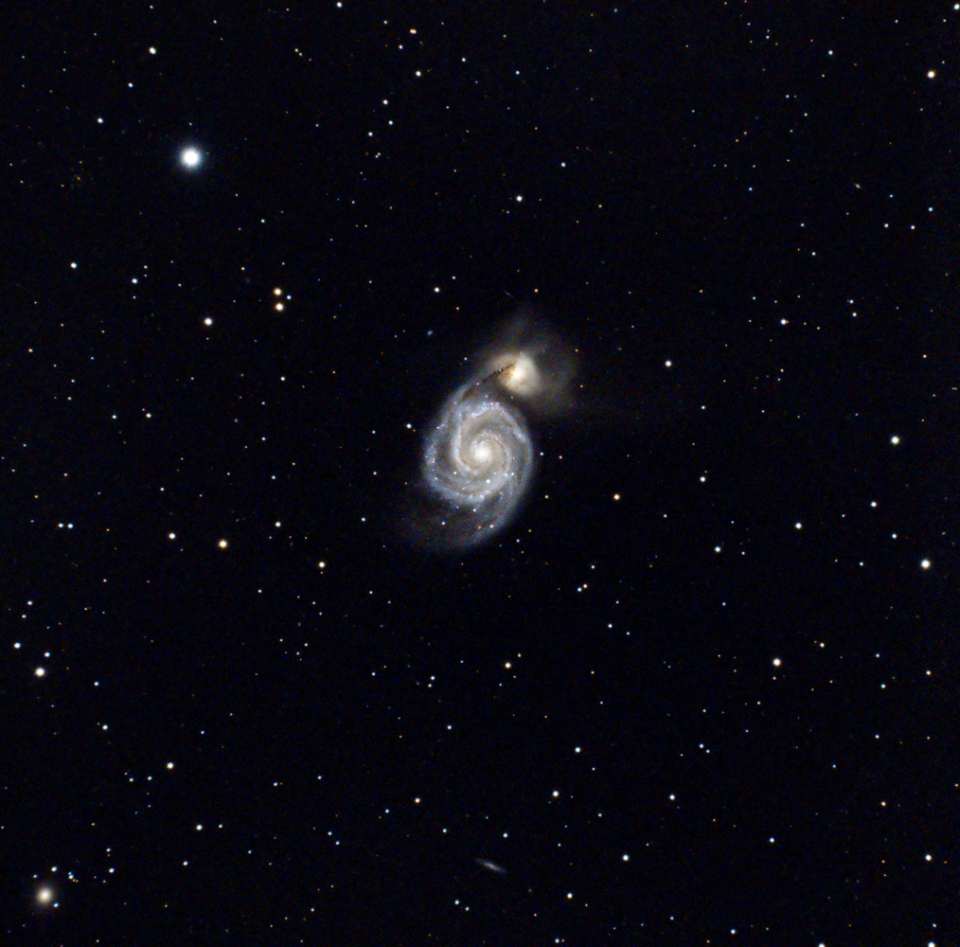Since I can't/couldn't travel overseas, the pandemic is/was a great time to spend money on astrophotography. Despite supply chain woes -- affecting so many business silos including photography and astronomy -- I have added a fair amount of astro gear these last 16 months. These include telescopes of different focal lengths and resolving capability, multiple astro cooled cameras, auto-guiding systems for the telescopes, and miniaturized computers controlling it all. I've also dived deep into specialized software for calibrating, integrating and processing my astro images. Along with all this new technical 'stuff' -- the science of astrophotography -- I've also gotten much better at capturing and processing the final results -- the art of astrophotography. This image is a good example. I first photographed M51, the Whirlpool Galaxy -- which is actually two colliding galaxies -- last year. The result was a rather muddy, brownish mess. The image you see here was taken last week over two nights, with my newest scope and camera. It is the result of 5.5 hours total capture in these increments: 30 x 60s, 30 x 120s, 3 x 180s, 30 x 300s. I then calibrated and integrated the files in Astro Pixel Processor before taking the output file into PixInsight for the majority of processing. Final touches were applied in Photoshop. Basically a 3-day workflow for one image! But I am happy with this image. Hubble it is not, but despite the fact that it was taken from my backyard in heavily light-polluted Salt Lake City, with a telescope equivalent to a relatively slow (f/7) 700mm lens, I am amazed at the quality of it. This telescope (Explore Scientific 102mm FCD100 f/7 ED APO Triplet Refractor) has incredible glass and it has permitted me to accurately capture the orangish dust of the tidal peninsula that connects the two galaxies as well as the blue and magenta colors in the spiral arms which are active star-formation regions. As well, the specialized astro camera -- ZWO ASI533MC Pro -- is designed and optimized for capturing deep space objects. Because I also had to contend with a 30-40% illuminated moon I also used a Baader Moonglow/Skyglow filter. Still, despite all this gear, M51 is an astonishing 30+ million light years from home!
Jeff Clay
More images can be seen at https://www.clayhausphotography.com/backyard-beyond and I can be followed at https://www.facebook.com/clayhaus/ and https://www.instagram.com/clayhausphotography/

